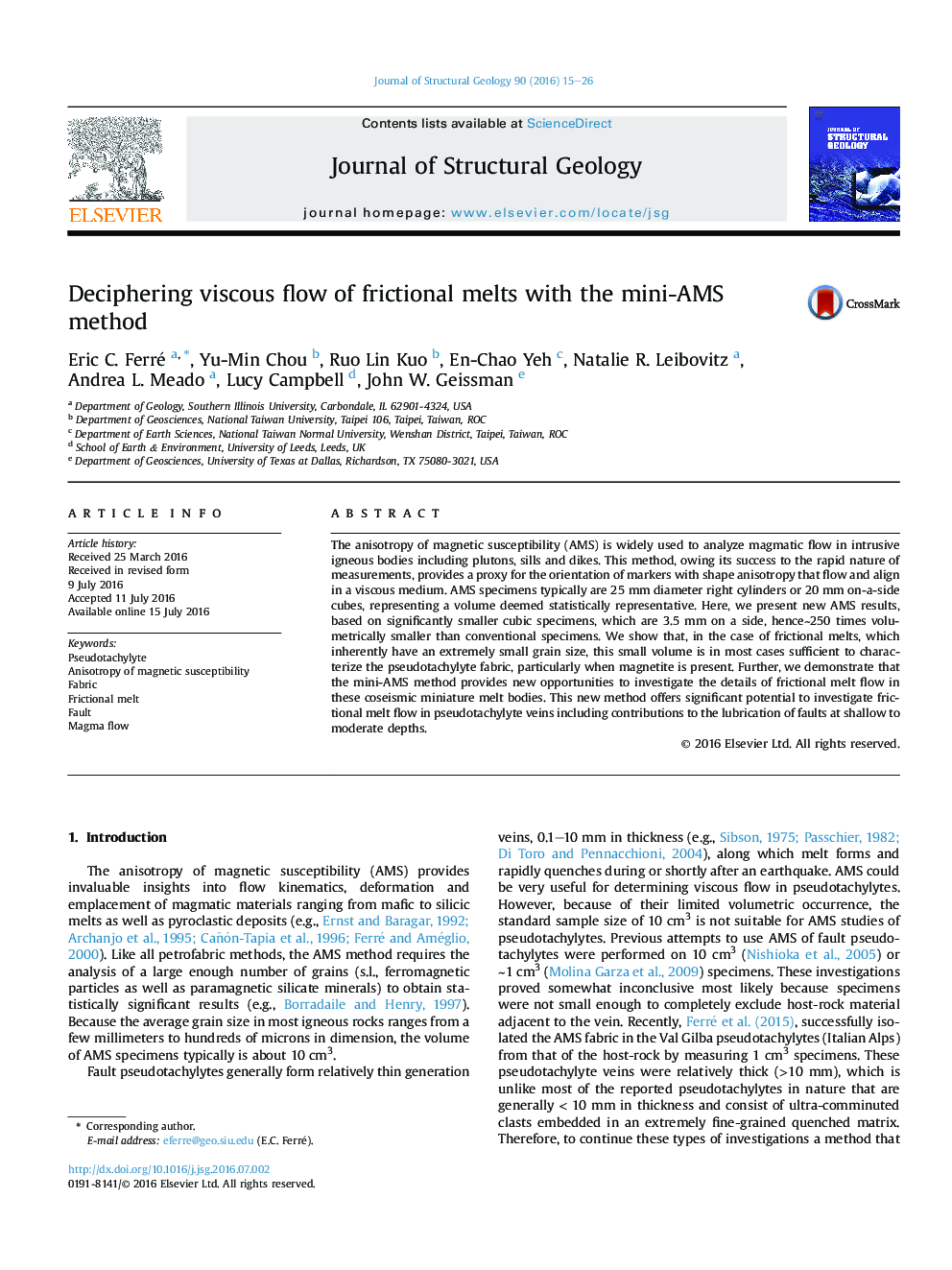| Article ID | Journal | Published Year | Pages | File Type |
|---|---|---|---|---|
| 6444625 | Journal of Structural Geology | 2016 | 12 Pages |
Abstract
The anisotropy of magnetic susceptibility (AMS) is widely used to analyze magmatic flow in intrusive igneous bodies including plutons, sills and dikes. This method, owing its success to the rapid nature of measurements, provides a proxy for the orientation of markers with shape anisotropy that flow and align in a viscous medium. AMS specimens typically are 25Â mm diameter right cylinders or 20Â mm on-a-side cubes, representing a volume deemed statistically representative. Here, we present new AMS results, based on significantly smaller cubic specimens, which are 3.5Â mm on a side, henceâ¼250 times volumetrically smaller than conventional specimens. We show that, in the case of frictional melts, which inherently have an extremely small grain size, this small volume is in most cases sufficient to characterize the pseudotachylyte fabric, particularly when magnetite is present. Further, we demonstrate that the mini-AMS method provides new opportunities to investigate the details of frictional melt flow in these coseismic miniature melt bodies. This new method offers significant potential to investigate frictional melt flow in pseudotachylyte veins including contributions to the lubrication of faults at shallow to moderate depths.
Related Topics
Physical Sciences and Engineering
Earth and Planetary Sciences
Geology
Authors
Eric C. Ferré, Yu-Min Chou, Ruo Lin Kuo, En-Chao Yeh, Natalie R. Leibovitz, Andrea L. Meado, Lucy Campbell, John W. Geissman,
